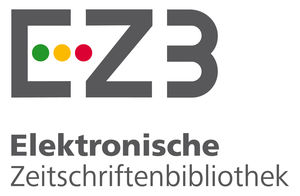Japanese and Swedish Mathematics Teacher Educators’ Pedagogical Content Knowledge – An Institutional Perspective
DOI:
https://doi.org/10.23925/1983-3156.2019v21i4p157-170Keywords:
educators teach, Japanese teacher, Swedish Mathematics TeacherAbstract
Résumé
L'objectif de ce travail est d'étudier quel genre de conditions et de limites constituent le contenu de la connaissance didactique du contenu dans les formateurs d'enseignants japonais et suédois (PCK). Nous décrivons comment les formateurs organisent leurs pratiques d'enseignement en relation avec la détermination de la zone pour analyser les praxéologies des leçons. Notre étude montre que le PCK des formateurs d'enseignants japonais est partagé plus explicitement par la communauté des formateurs par rapport à l'homologue suédois. En outre, un programme de formation japonais plus détaillé ainsi que l'approche structurée de résolution de problèmes illustrent comment créé de riches organisations mathématiques et didactiques pour les futurs enseignants.
Abstract
The aim of this paper is to investigate which kind of conditions and constraints affect Japanese and Swedish teacher educators’ pedagogical content knowledge (PCK). We analyse the praxeologies of the lessons in which the educators teach area determination. Our study shows that the Japanese teacher educators’ PCK are more explicitly shared by the community of the teacher educators compared to the Swedish counterpart. Also, the detailed Japanese curriculum and the structured problem solving approach promote to illustrate how to construct rich mathematical and didactical organisations for prospective teachers.
References
Abell, S. K. (2008). Twenty Years Later: Does pedagogical content knowledge remain auseful idea? International Journal of Science Education, 30(10), 1405–1416.
Asami-Johansson, Y., & Attorps, I. (2015). Applying the structured problem solving in teacher education in Japan – a case study. In K. Krainer & N. Vondrová (Eds.), Proceedings of the ninth congress of the European society for research in mathematics education (pp. 2741–2747). Prague: Charles University and ERME.
Bandura, A. (1977). Self-efficacy: Toward a unifying theory of behavioral change. Psychological Review, 84, 191-215.
Bertram, A., & Loughran, J. (2012). Science teachers’ views on CoRes and Pap-eRs as a framework for articulating and developing pedagogical content knowledge. Research in Science Education, 42, 1027–1047. DOI 10.1007/s11165-011-9227-4
Bosch, M., & Gascón, J. (2006). Twenty-five years of the didactic transposition. ICMI Bulletin, 58, 51-63.
Brorsson, Å. (2013). Prima Matematik 1A/1B. Malmö: Gleerups.
Chevallard, Y. (1992). A theoretical approach to curricula. Journal für Mathematikdidaktik, 13, 215-230.
Falck, P., Picetti, M., & Elofsdotter Meijer, S. (2011). Matte Safari Direkt 1A/1B. Stockholm: Sanoma.
Grossman, P. L. (1990). The making of a teacher: Teacher knowledge and teacher education. New York: Teachers College Press.
Hemmi, K. & Ryve, A. (2015). Effective mathematics teaching in Finnish and Swedish teacher education discourses. Journal of Mathematics Teacher Education 18 (6), 501-521.
Kind, V. (2009). Pedagogical content knowledge in science education: Perspectives and potential for progress. Studies in Science Education, 45 (2), 169–204.
Liljedahl, P. et al. (2009). Components of mathematics teacher training. In R. Even & D. L. Ball (Eds.), The professional Education and Development of teachers of Mathematics (pp. 25–33). New York: Springer.
Löwing, M., & Kilborn, V. (2002). Baskunskaper i matematik: för skola, hem och samhälle. Lund: Studentlitteratur.
Loughran, J.J., Mulhall, P., & Berry, A. (2006). Understanding and developing science teachers’ pedagogical content knowledge. Rotterdam: Sense Publishers.
Ministry of education, culture, sports, science and technology (MEXT) (2008a). Shin gakushu shido yoryo, ikiru chikara. Shougakko gakushu shido yoryo suugaku-hen [The New Course of Study – zest for life. Curriculum standard for elementary school, mathematics]. Tokyo: Kyouiku Shuppan.
Ministry of education, culture, sports, science and technology (MEXT) (2008b). Shougakko gakushu shido yoryo kaisetsu, sansuu-hen [Guidelines of the course of study for elementary school, mathematics]. Tokyo: Kyouiku Shuppan.
The Ministry of Education and Research (2010). Bäst i klassen – en ny lärarutbildning [Top of the class – a new teacher education]. http://www.regeringen.se/contentassets/c0d91cff5e4d4223b15334ce441cd00a/bast-i-klassen---en-ny-lararutbildning-prop.-20091089
Miyakawa, T. (2010). Introducing the unit with comparison: Difference and construction of Units. Journal of Japan Society of Mathematical Education. 92 (12) 72-73.
Rystedt, E., & Trygg, L. (2010). Laborativ matematikundervisning – vad vet vi? [Lessons with manipulatives – what do we know about this?]. Göteborg: Nationellt centrum för matematikutbildning (NCM).
Seki, S., & Hashimoto, Y. (Eds.). (2008). Tanoshii sansuu 1 [Fun Mathematics for Grade 1]. Tokyo: Dainihon tosho.
Shimizu, S., Hunakoshi, S., Negami, I., & Teragaki, S. (Eds.). (2014). Wakuwaku sansuu 1 [Exiting Mathematics for Grade 1]. Tokyo: Keirinkan.
Shimizu, Y. (1999). Aspect of mathematics teacher education in japan: Focusing in teachers’ roles. Journal of Mathematics Teacher Education, 2, 107-116.
Shulman, L. S. (1986). Those who understand: Knowledge growth in teaching. Educational Researcher, 15 (2), 4–14.
Skolverket. (2011a). Curriculum for the compulsory school, pre-school class and the recreation centre. Stockholm: Skolverket.
Skolverket. (2011b). Kommentarmaterial till kursplanen i matematik [Comment-ary materials for the curriculum in mathematics]. Stockholm: Skolverket.
Stigler, J., & Hiebert, J. (1999). The teaching gap: Best ideas from the world’s teachers for improving education in the classroom. New York: The free press.
Winsløw, C. (2012). A comparative perspective on teacher collaboration: The case of lesson study in Japan and of multidisciplinary teaching in Denmark. In G. Gueudet et al. (Eds.), From Text to ‘Lived’ Resources, Mathematics Teacher Education 7, DOI 10.1007/978-94-007-1966-8_15. Springer.
Downloads
Published
How to Cite
Issue
Section
License
Autores que publicam nesta revista concordam com os seguintes termos:- Autores mantém os direitos autorais e concedem à revista o direito de primeira publicação, com o trabalho simultaneamente licenciado sob a Licença Creative Commons Attribution que permite o compartilhamento do trabalho com reconhecimento da autoria e publicação inicial nesta revista.
- Autores têm autorização para assumir contratos adicionais separadamente, para distribuição não-exclusiva da versão do trabalho publicada nesta revista (ex.: publicar em repositório institucional ou como capítulo de livro), com reconhecimento de autoria e publicação inicial nesta revista.
- Autores têm permissão e são estimulados a publicar e distribuir seu trabalho online (ex.: em repositórios institucionais ou na sua página pessoal) a qualquer ponto antes ou durante o processo editorial, já que isso pode gerar alterações produtivas, bem como aumentar o impacto e a citação do trabalho publicado (Veja O Efeito do Acesso Livre).













